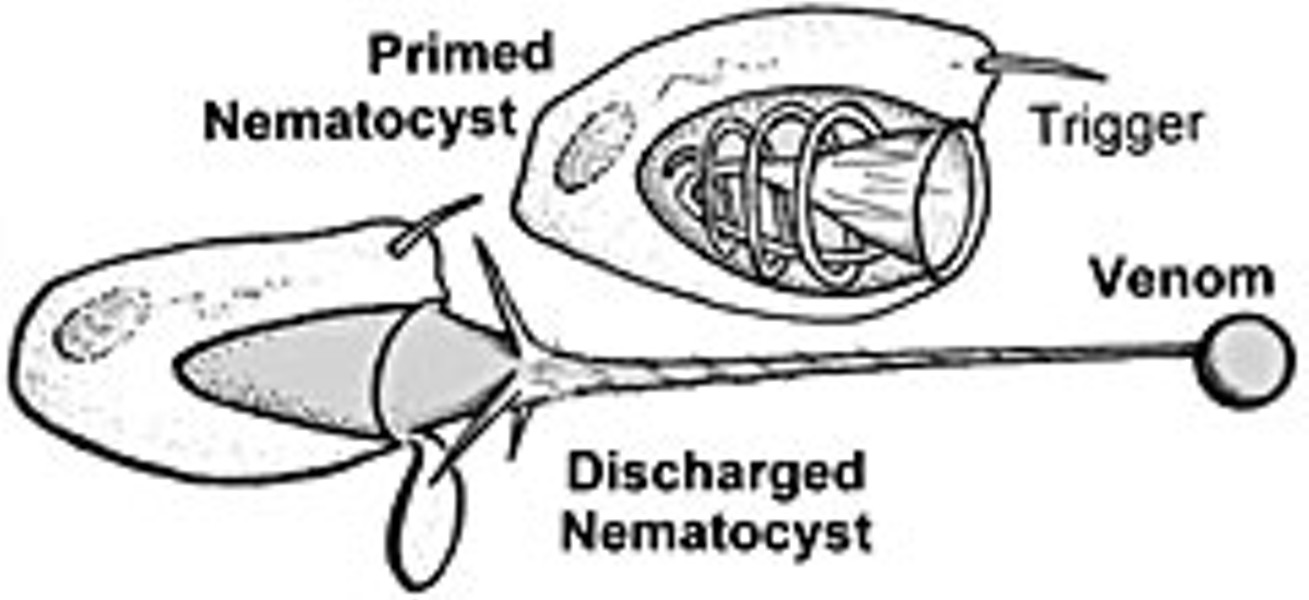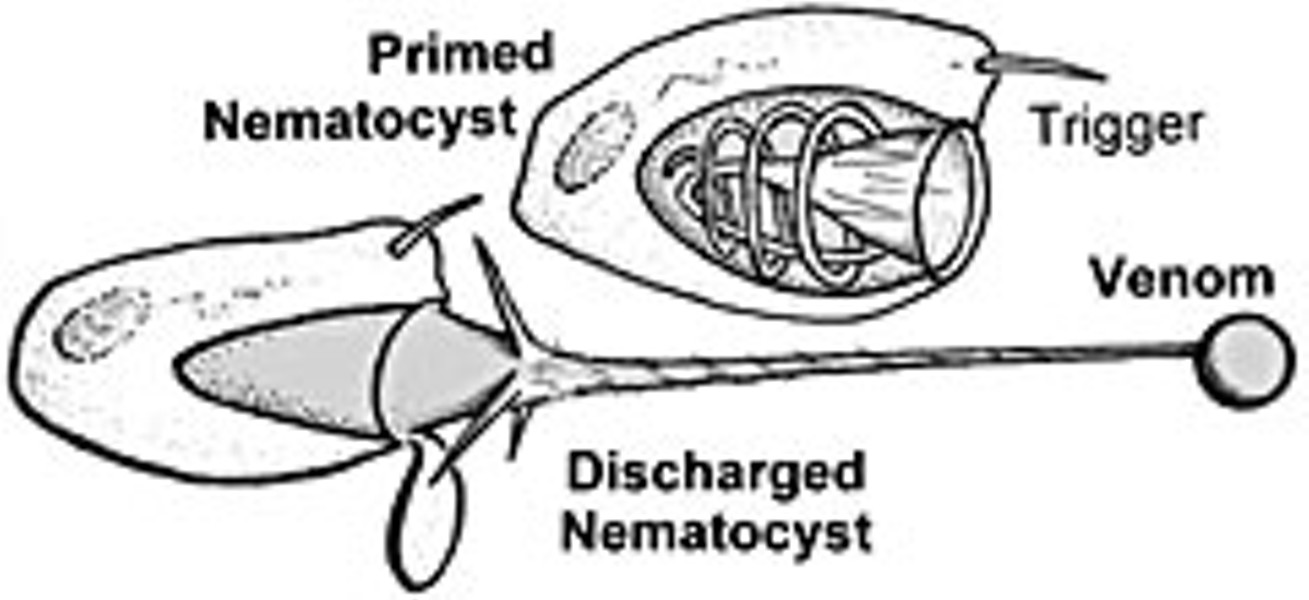Among all the fantastic products of three billion years of evolution, such as intricately constructed ears, eyes and skeletons, the most amazing exists within primitive anemones, corals and jellyfish. The stickiness you feel when touching anemones in local tide-pools is a consequence of thousands of microscopic harpoons launched into your skin. Each launching mechanism is absolutely astounding, because it is not assembled from countless microscopic cells but from countless molecules confined within a single cell.
When triggered, a nematocyst containing venom under high osmotic pressure propels a hollow tube into its victim, and injects the venom through that tube. The tube turns inside-out like a rubber glove. It's tightly coiled prior to discharge, but reverses in the manner of a snail's emerging eye-stalk — just a million times faster. The nematocysts of box jellies cause severe pain and kill many swimmers in the seas north of Australia. How did this diabolical structure evolve? My guess is presented in the series of small diagrams.
Don Garlick is a geology professor retired from HSU. He invites any questions relating to North Coast science, and if he cannot answer it he will find an expert who can. E-mail [email protected].



Comments